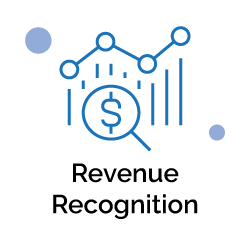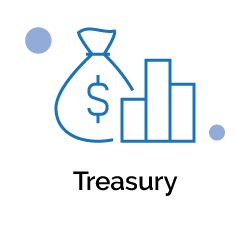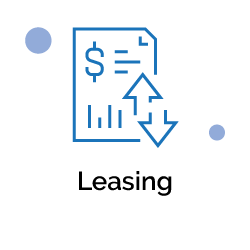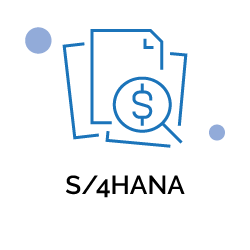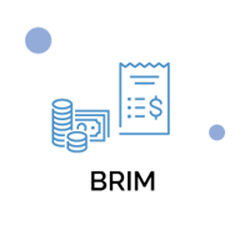Manage your financial investments and borrowings, like fixed or variable interest rate deposits, loans, commercial papers, or investment certificates. Straight-through processing of financial transactions from front office, middle office, back office, and accounting.
The debt and investment management process helps you to secure short-term liquidity at the best interest rates and manage your medium- to long-term debt and investments optimally. These functions help you to automate labor-intensive processes, such as the confirmation of financial transactions and accounting postings, giving you more time to focus on value-added activities. You can manage operational and accounting requirements.
The product types represent the different kinds of financial instrument. They control the processing of the associated financial transactions and treasury positions.
Manage your financial investments and borrowings, like fixed or variable interest rate deposits, loans, commercial papers, or investment certificates. Straight-through processing of financial transactions from front office, middle office, back office, and accounting.
The debt and investment management process helps you to secure short-term liquidity at the best interest rates and manage your medium- to long-term debt and investments optimally. These functions help you to automate labor-intensive processes, such as the confirmation of financial transactions and accounting postings, giving you more time to focus on value-added activities. You can manage operational and accounting requirements.
The product types represent the different kinds of financial instrument. They control the processing of the associated financial transactions and treasury positions.
Overview of Financial Instruments
Money Market
Derivatives

Interest Rate Derivatives
A swap is an exchange of payment flows over a fixed period. You define these payment flows when you conclude a swap. However, their absolute amount may depend on future events (such as variable interest payments, where the amounts depend on the level of reference interest rates in the future).
Interest Rate Swap (62A)
Interest rate swaps are transactions that exchange payment flows on the basis of different interest rates in the same currency. You agree on a certain term, usually over a year. An interest rate swap enables you to hedge possible interest rate risks.


Cross-Currency Interest Rate Swap (62B)
A currency swap is an exchange of payment flows comprising interest payments and capital payments in different currencies at an agreed exchange rate. You can use currency swaps to hedge possible currency risks. They also allow you cheaper access to the respective foreign currency markets.
Derivatives
Interest Rate Derivatives

A swap is an exchange of payment flows over a fixed period. You define these payment flows when you conclude a swap. However, their absolute amount may depend on future events (such as variable interest payments, where the amounts depend on the level of reference interest rates in the future).
Interest Rate Swap (62A)

Interest rate swaps are transactions that exchange payment flows on the basis of different interest rates in the same currency. You agree on a certain term, usually over a year. An interest rate swap enables you to hedge possible interest rate risks.
Cross-Currency Interest Rate Swap (62B)

A currency swap is an exchange of payment flows comprising interest payments and capital payments in different currencies at an agreed exchange rate. You can use currency swaps to hedge possible currency risks. They also allow you cheaper access to the respective foreign currency markets.
Securities
Investment Certificates
The Money Market Funds (MMF) are deemed as an instrument with lower risk and higher liquidity, with a relatively lower return as well. The MMFs are traditionally traded at a stable 1.00 currency unit. Depending on the rules and regulations, the MMFs are required to declare their net asset value to be variable on a daily basis, or fixed for a period. For money market funds the following product types are available:
-
Money Market Fund (02A)
For this product type profit distribution and dividend adjustment conditions are available. You can use this product type for investment funds, which pay their dividends in a regular rhythm and each dividend flow is real profit distribution.
The dividend amounts can be entered as fix amounts or calculated for factor-based dividends.
-
MMF Accrued + Accum. Dividend (02B)
For this product type accrued dividend, accumulated dividend, and dividend adjustment conditions are available. You can use this product type for investment funds, which communicate their accrued dividends, for example, on daily base but the payment of the dividends (accumulated dividend) is done monthly.
The dividend amounts can be entered as fix amounts or calculated for factor-based dividends.
For this product type, the accrued dividends are relevant for Accrual/Deferral of Expenses and Revenues function. You can use the Run Accrual/Deferral app to accrue the accrued dividend of money market funds.
-
MMF Accum. Dividend (02C)
For this product type accrued dividend, accumulated dividend, and dividend adjustment conditions are available. You can use this product type for investment funds, which communicate their accrued dividends, for example, on daily base but the payment of the dividends (accumulated dividend) is done monthly.
The dividend amounts can be entered as fix amounts or calculated for factor-based dividends.
Bonds (04A)
Bonds are interest bearing securities that guarantee the payment of interests and the repayment at the end of term. You can create the class data for bonds using product type 04A (Bonds). You can create different kinds of bond by defining class data and the conditions accordingly:
-
Fixed-interest bonds
-
Floating-rate notes
-
Zero-coupon bonds
You can manage the following processes for bonds:
These processes cover master data management, the trading and processing of securities transactions (including the placement and redemption of issued bonds), as well as paying and posting in Financial Accounting. In addition, various functions for managing security positions and for period-end closing are available. Treasury Reporting provides you with a broad range of apps for analyzing your debts and investments in bonds.
Securities
Investment Certificates
The Money Market Funds (MMF) are deemed as an instrument with lower risk and higher liquidity, with a relatively lower return as well. The MMFs are traditionally traded at a stable 1.00 currency unit. Depending on the rules and regulations, the MMFs are required to declare their net asset value to be variable on a daily basis, or fixed for a period. For money market funds the following product types are available:
-
Money Market Fund (02A)
For this product type profit distribution and dividend adjustment conditions are available. You can use this product type for investment funds, which pay their dividends in a regular rhythm and each dividend flow is real profit distribution.
The dividend amounts can be entered as fix amounts or calculated for factor-based dividends.
-
MMF Accrued + Accum. Dividend (02B)
For this product type accrued dividend, accumulated dividend, and dividend adjustment conditions are available. You can use this product type for investment funds, which communicate their accrued dividends, for example, on daily base but the payment of the dividends (accumulated dividend) is done monthly.
The dividend amounts can be entered as fix amounts or calculated for factor-based dividends.
For this product type, the accrued dividends are relevant for Accrual/Deferral of Expenses and Revenues function. You can use the Run Accrual/Deferral app to accrue the accrued dividend of money market funds.
-
MMF Accum. Dividend (02C)
For this product type accrued dividend, accumulated dividend, and dividend adjustment conditions are available. You can use this product type for investment funds, which communicate their accrued dividends, for example, on daily base but the payment of the dividends (accumulated dividend) is done monthly.
The dividend amounts can be entered as fix amounts or calculated for factor-based dividends.
Bonds (04A)
Bonds are interest bearing securities that guarantee the payment of interests and the repayment at the end of term. You can create the class data for bonds using product type 04A (Bonds). You can create different kinds of bond by defining class data and the conditions accordingly:
-
Fixed-interest bonds
-
Floating-rate notes
-
Zero-coupon bonds
You can manage the following processes for bonds:
These processes cover master data management, the trading and processing of securities transactions (including the placement and redemption of issued bonds), as well as paying and posting in Financial Accounting. In addition, various functions for managing security positions and for period-end closing are available. Treasury Reporting provides you with a broad range of apps for analyzing your debts and investments in bonds.
Business Benefits
-
Review the financial status
-
Automate the management of investments and borrowings, including creation of the financial transaction, confirmation of contracts with counterparties, payments, interest rate adjustments, and accounting
-
Take better operational and strategic decisions using the comprehensive reporting and analysis tools
-
Improve internal operational compliance, such as by setting counterparty limits
-
Increase your focus on value-added activities instead of on manual procedures
Key process flows covered
Create and process financial transactions
Automated correspondence (external and/or internal confirmations)
Process payments including condition-based incoming payments such as dividends
Transfer values to the general ledger
Adjust interest rates and update planned records for securities
Perform month-end accounting processes
Monitor and report your treasury positions and financial transactions
Key process flows covered
Create and process financial transactions
Automated correspondence (external and/or internal confirmations)
Process payments including condition-based incoming payments such as dividends
Transfer values to the general ledger
Adjust interest rates and update planned records for securities
Perform month-end accounting processes
Monitor and report your treasury positions and financial transactions
Prerequisites
To run the process, you must ensure the following:
-
Self-service configuration apps for making settings related to Treasury and Risk Management processes have been added to the Manage Your Solution See also: Configuration Options for Key Users
-
The Treasury Risk Manager defines your traders and manages their authorizations.
See also: Define Traders and Manage Trader Authorizations
-
The Treasury Risk Manager defines user data. See also: Define User Data
-
The Treasury Specialist – Back Office creates business partners in the issuer, depository bank, and counterparty roles.
-
The Treasury Specialist – Middle Office or the Treasury Risk Manager defines financial positions for financial status reports.
-
The Treasury Specialist – Middle Office defines the limits.
-
On the launchpad under <strong”>Correspondence, make the settings with which to run the automated correspondence in the following apps:
-
Assign Profile and BP Group – External Recipients
-
Assign Profile and BP Group – Internal Recipients
-
-
Master Data
-
Market Data
-
Decide on how you enter your market data, such as FX rates, interest rates, security prices, and factor values:
-
You can use the Import Market Data app to import market data from spreadsheets.
-
You can use the datafeed to incorporate current and historic market data into your financial transactions by means of the SAP Market Rates Management service. In this case, you must subscribe to the Market Data Service provided by the SAP Cloud Platform.
-
-
The Yield Curve Framework is preconfigured. You need to make additional settings only if you want to consider credit spreads in the net present value calculation:
-
Assign Attributes to Evaluation Type
-
Create the reference entities needed by using these apps:
-
-
-
Legacy data transfer
Prerequisites
To run the process, you must ensure the following:
-
Self-service configuration apps for making settings related to Treasury and Risk Management processes have been added to the Manage Your Solution See also: Configuration Options for Key Users
-
The Treasury Risk Manager defines your traders and manages their authorizations.
See also: Define Traders and Manage Trader Authorizations
-
The Treasury Risk Manager defines user data. See also: Define User Data
-
The Treasury Specialist – Back Office creates business partners in the issuer, depository bank, and counterparty roles.
-
The Treasury Specialist – Middle Office or the Treasury Risk Manager defines financial positions for financial status reports.
-
The Treasury Specialist – Middle Office defines the limits.
-
On the launchpad under <strong”>Correspondence, make the settings with which to run the automated correspondence in the following apps:
-
Assign Profile and BP Group – External Recipients
-
Assign Profile and BP Group – Internal Recipients
-
-
Master Data
-
Market Data
-
Decide on how you enter your market data, such as FX rates, interest rates, security prices, and factor values:
-
You can use the Import Market Data app to import market data from spreadsheets.
-
You can use the datafeed to incorporate current and historic market data into your financial transactions by means of the SAP Market Rates Management service. In this case, you must subscribe to the Market Data Service provided by the SAP Cloud Platform.
-
-
The Yield Curve Framework is preconfigured. You need to make additional settings only if you want to consider credit spreads in the net present value calculation:
-
Assign Attributes to Evaluation Type
-
Create the reference entities needed by using these apps:
-
-
-
Legacy data transfer


